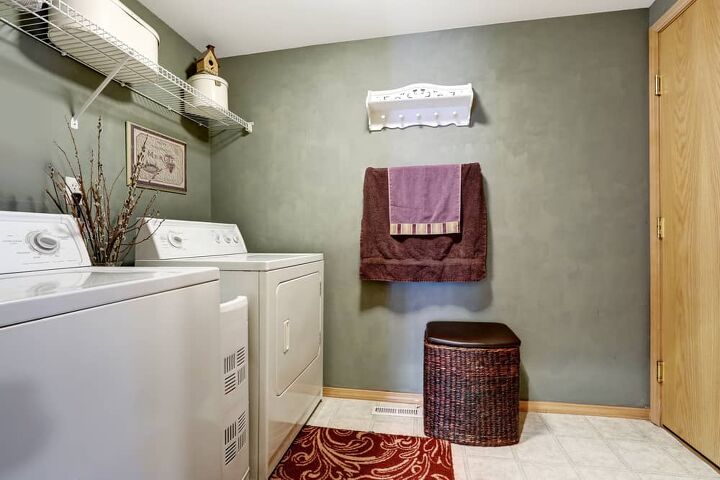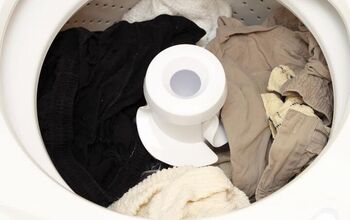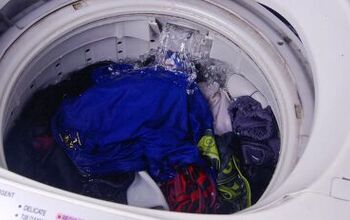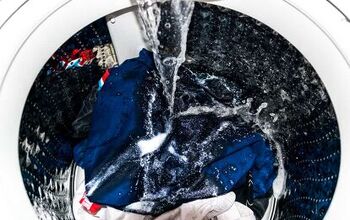Kenmore 80 Series Washer Won't Spin? (Fix It Now!)

Nothing is worse than being in a hurry to get your laundry done, only to find out that your washer won’t enter the spin cycle so that you can throw your clothes into the dryer. Now, you must wring each item by hand and hope that they’re not too wet to dry in time. Frustrating, isn’t it?
If your Kenmore 80 Series washer doesn’t spin, this could be a sign of a motor coupling issue, or possibly a problem with your lid switch, or uneven laundry distribution. It could even be as simple as your lid not shutting all the way.
Before you get stressed out, take some time to inspect your washer according to this guide. We’ll walk you through the possible issues and help you troubleshoot your Kenmore 80 Series washer. That way, you don’t have to spend money on hiring a professional right away, especially if it’s a simple fix.
Do You Need Appliance Installation or Replacement?
Get free, zero-commitment quotes from pro contractors near you.

Why Won’t Your Kenmore 80 Series Washer Spin?
Often, the main problem with a Kenmore 80 Series washer not spinning is due to several issues included:
- Clogged hose
- Uneven laundry distribution
- The lid isn’t closed all the way
- Your washer isn’t level
Before you get into the nitty-gritty, it’s a good idea to go over these issues as they are the most common ones.
Clogged Hose
If your hose is clogged, this will result in your washer not entering the spin cycle because it doesn’t have adequate drainage. Also, if your hose is kinked, this will cause the same problem. In this case, you will need to pull the washer out and look in the back for a kinked hose. If the hose isn’t kinked, check to see if it’s clogged.
Removing the hose is simple as you will need to remove the clips that hold it in place and shine a flashlight through to check for blockages. You can also use a vacuum hose to ensure that it’s free-flowing before putting the machine back in place.
Uneven Laundry Distribution
Sometimes, if you’re running a bulky load, the weight can become too much on one side of your washer. In this case, you will need to stop the cycle and distribute the load evenly, and then restart your dryer to see if it will then enter the spin cycle.
If it won’t enter the spin cycle, circulate the dial to drain the water out. Then, with the washer empty, redistribute the items in the tub. If you’re washing comforters, you may have to do this at a laundromat with a higher capacity washer as the comforter may be what’s throwing your washer off.
Lid Isn’t Closed
When the lid is closed, a button that’s triggered lets the machine know the cover is shut. If this mechanism isn’t getting appropriately triggered, this will keep your washer from going into the spin cycle.
If your lid switch isn’t working, you will need to replace this as there is no way to repair it. This can be done easily on your own for $35 to $50, depending on your machine’s model.
Unlevel Washer
Sometimes if your washer is not level, it affects the bearings, which are what keeps your tub steady during the agitation and spin cycles. If it’s not level, you will need to adjust it by pulling out each leg to ensure its level.
It’s a good idea during this process to use either a water or laser level to ensure that your washer is as level as it can be. Then, it should enter the spin cycle with no problem.
Still Can’t Find Out Why Your Washer Won’t Spin?
If your washer still isn’t spinning by now, there’s still hope. This means that something else is causing it not to turn, so it’s time to grab a little elbow grease and get to work. We’ve created a list of some other potential causes below.
Broken Drive Belt
Your drive belt is what helps connect the motor and transmission so that they can work together to power your washer. Sometimes the drive belt is broken, and other times it may have fallen off the pulleys. Regardless, you will need to fix it so that your washer can spin again.
To ensure the drive belt isn’t broken, you will need to pull off the back panel to access it. If it’s loose, tighten it. If it’s broken, you will need to buy a new one.
Motor Control Board Malfunction
Your motor control board is what helps give power to your motor. This fragile component also regulates the spin speed, so if it’s not working, then your washer may not enter the spin cycle. Eventually, this will cause your washer to shut down completely.
To check the motor control board, you need to ensure that it provides power to your motor. If it’s not, then it will need to be replaced. However, it might be a better idea to purchase a new washer since these are expensive.
Rotor
Your rotor is part of an intricate system that helps allow your tub to spin by creating an electromagnetic field. So, if the rotor is damaged, this will cause the electromagnetic field not to be as strong, which then will stop your washer from spinning. By replacing your rotor in the event it’s damaged, you can fix the problem.
Motor Coupling
Your motor coupling connects the motor and transmission for your washer. To see if this is the problem, you will need to inspect the motor coupling by entering through the back panel. Before doing this, though, make sure the washing machine is unplugged.
Look for any damage or broken pieces. If it is broken, there is no way to repair it. Instead, you will need to purchase a new motor coupling to install.
Lid Switch
Look under the top panel of your washer for your lid switch to make sure it’s not bent or broken. If it looks okay, check to make sure that the lid is triggering the button, because if it’s not, this will keep your washer from spinning.
If the lid seems to press the switch, you will need to check the wiring to ensure that nothing is frayed or burnt. Your lid switch could be malfunctioning in which you will then need to replace it.
Drive Motor
The drive motor is what drives the spinning of your washer by rotating the spin basket. However, a drive motor problem will produce a burning smell like a hot wire or hot metal. If you smell something like this, it’s most likely due to a defective drive motor.
If your motor is not getting power or is only humming, then this indicates that your drive motor needs to be replaced. However, it’s best to check all other options before doing this, as this can be laborious and costly.
Clutch Assembly
Your clutch assembly is what controls the rate at which your tub spins or agitates. When this is worn out, this can cause your washer not to enter the spin cycle. To diagnose the clutch, look at it. If it looks old, worn out, or broken, you will need to replace it to get your washer working correctly.
Stator
The stator is the other component that works with the rotor to create an electromagnetic field strong enough to spin your tub. The windings are notorious for wearing out, so check the stator windings to see if they look worn or warped.
If you do find any damage, you will need to replace the stator. By replacing this component, the electromagnetic field will then be engaged again so that your washer will spin.
Bearing
The bearing to your washer is in the center of your washer, on the inside of the outer casing. The bearing ensures that your washer spins smoothly; however, if it’s old or worn out, then it may seize up and won’t allow the tub to spin.
Replacing a bearing may not be possible, depending on the washer. Sometimes, bearings are sold separately, but you will need to purchase a new outer casing if they’re not. This can be too involved and expensive, which is why it’s a better idea to replace your washer altogether.
Hire A Professional Or Do It Yourself?
Most of these diagnoses are easily made on your own; however, there’s no shame in hiring a professional if you are unsure of or uncomfortable with the process. If you feel that it’s more convenient for you to hire a professional, or you’re new to the DIY world, there’s no shame in that.
However, it’s best to call around to several different places for quotes to ensure you’re getting the best bang for your buck. You can also look into hiring a friend instead so that you can learn what to do and save on the cost of services.
Do You Need Appliance Installation or Replacement?
Get free, zero-commitment quotes from pro contractors near you.

Wrapping It Up
Having a washer that won’t spin is no fun, especially when you desperately need to wash your laundry. By taking your time and walking through each of these scenarios, you will most likely figure out why your washer won’t spin. However, if you’re uncomfortable with doing this on your own, it would be a good idea to ask a friend for help or hire a professional.

Heather is a passionate writer who loves anything DIY. Growing up, she learned everything from home repairs to design, and wants to share her tips with you. When she's not writing, she's usually hiking or searching for her next DIY project.
More by Heather Robbins



























